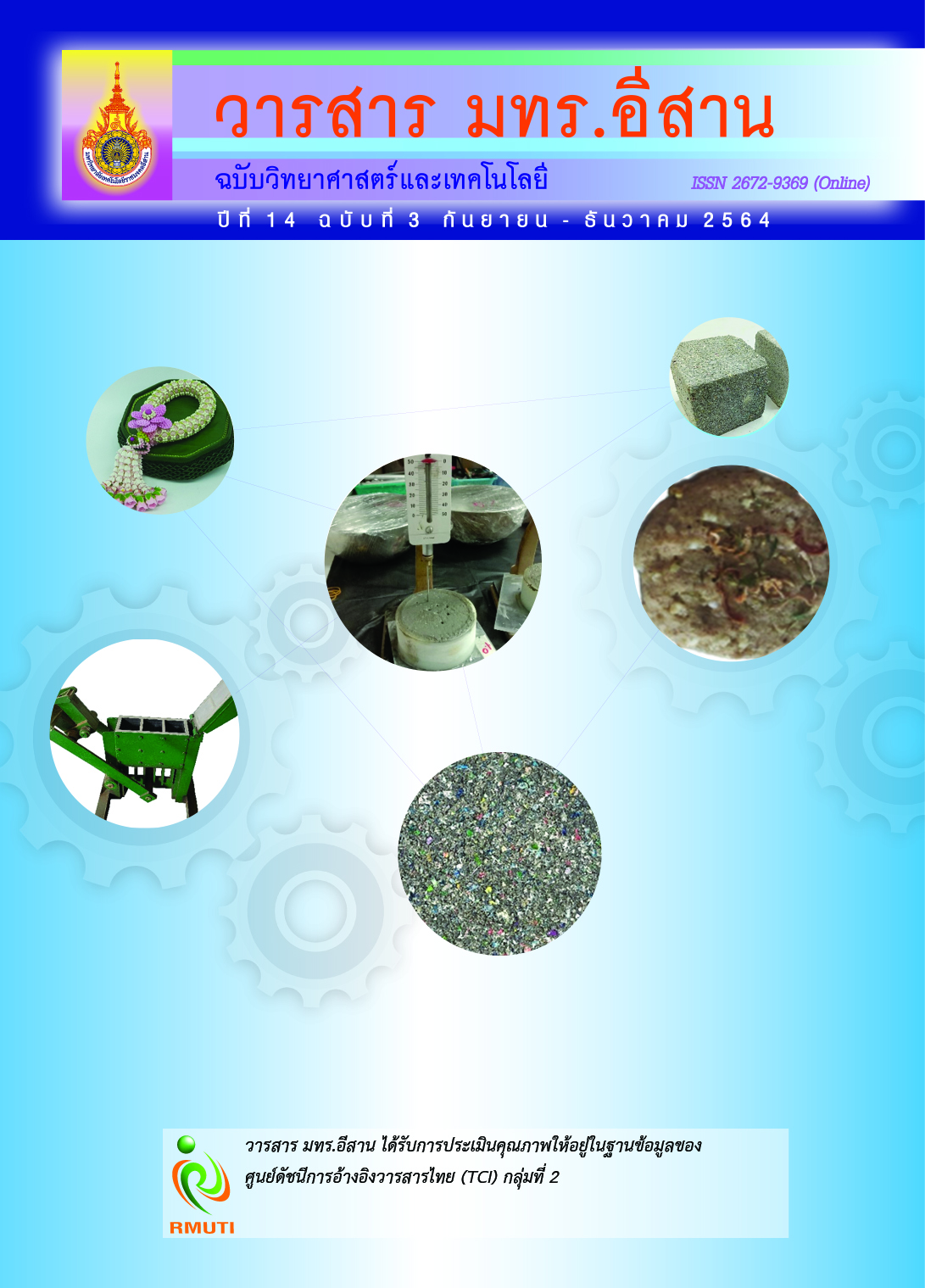A Monthly Forecast of Electricity Consumption for Various Types of Businesses; Case Study: Muang District, Nakhon Ratchasima Province
Main Article Content
Abstract
The purpose of this research is to study and compare forecasting methods for forecasting monthly electricity consumption for specific businesses. The case study will focus on businesses in Muang District, Nakhon Ratchasima Province. Data from the Nakhon Ratchasima Provincial Statistical office was used. The data was collected from January 2013 to June 2020 in the amount of 90 values. The researcher divided the data into 2 sets, the first data set from January 2013 to June 2019, 78 values. Three forecast models were used in this research: the ARIMA model, the Multiplicative Winter model, and the Decomposition model. The second data set was used to compare and verify the accuracy. To select the most suitable from July 2019 to June 2020, 12 values and the criteria used to compare the forecast error of each model, that is Mean Absolute Percentage Error (MAPE) and Root Mean Square Error (RMSE). The results of the study showed that the ARIMA model is suitable for forecasting specific business electricity consumption. The highest electricity consumption will be 3,397,843.30 KW/hour, in March 2021 and the lowest electricity consumption, will equal 2,539,831.42 KW/hour, in December 2021.
Article Details
References
Economic Base. (2021). Korat Boom That Surged 80,000,000 Per Rai of Motorway - High Speed Fireworks Center ERA. Access (23 August 2020). Available (http://www.thansettakij.com)
Nakhon Ratchasima Provincial Statistical Office. (2013). Nakhon Ratchasima Population Data Report. Access (25 August 2020). Available (http://nkrat.nso.go.th/)
Thomgkam, J. and Sukmak, V. (2021). Predicting Breast Cancer Patient Survival. RMUTI Journal of Science and Technology. Vol. 14, No. 1, pp. 44-54
National Housing Authority. (2018). Population Data Report. Access (25 August 2020). Available (http://nhic.nha.go.th/)
Suphacan, S. (2015) Forecasting Electricity Consumption in Thailand Using the SARIMA - GP Hybrid Model with New Kernel Function.Research Methodology and Cognitive Science Burapha University. Chonburi Thailand
Yuk, W. and Thongkham, J. (2018) Comparison of Time Series Techniques for Predicting Gold and Oil Prices. RMUTI Journal of Science and Technology. Vol. 11, No. 2, pp. 154-167
Sutthison, T. (2018). A Comparison of the Forecasting Methods of the Electricity Consumption of Ubon Ratchathani Rajabhat University. Journal of Industrial Ubon Ratchathani Rajabhat University. Vol. 8, No. 1, pp. 58-74
Kaewhawong, N. (2015). Forecasting Electricity Consumption of Thailand by Using SARIMA and Regression Model with ARIMA Error. Thai Journal of Science and Technology. Vol. 4, No. 1, pp. 24-36
Thirawiriya, C. (2017). Comparison of Forecasting Methods for Electricity Demand in Nakhon Phanom Province. Industrial Engineering Faculty of Engineering, Nakhon Phanom University
Konkrua, N. and Boonlha, K. (2016). Forecasting Power Units Quantity Distributed Phitsanulok Province. Journal of Science Ladkrabang. Vol. 25, No. 2, pp. 54-56
Box, G. E. P. Jenkins, G. M. Rinses, G. C., and Ljung, G. M. (2016). Time Series Analysis: Forecasting and Control. Fifth Edition. New Jersey, John Wiley & Sons
Sysunam, V. and Nanthasamroeng, N. (2018). Electricity Demand Forecasting for Champasak Province in Lao PDR Using Winter’s Method with Optimizing Level, Trend and Seasonality Smoothing Constant. Thai Industrial Engineering Network Journal. Vol. 4, No. 2, pp. 51-58
Theeraviriya, C. (2017). A Comparison of the Forecasting Method for Electric Energy Demand in Nakhonphanom Province. Naresuan University Journal: Science and Technology. Vol. 25, No. 4, pp. 124-137


